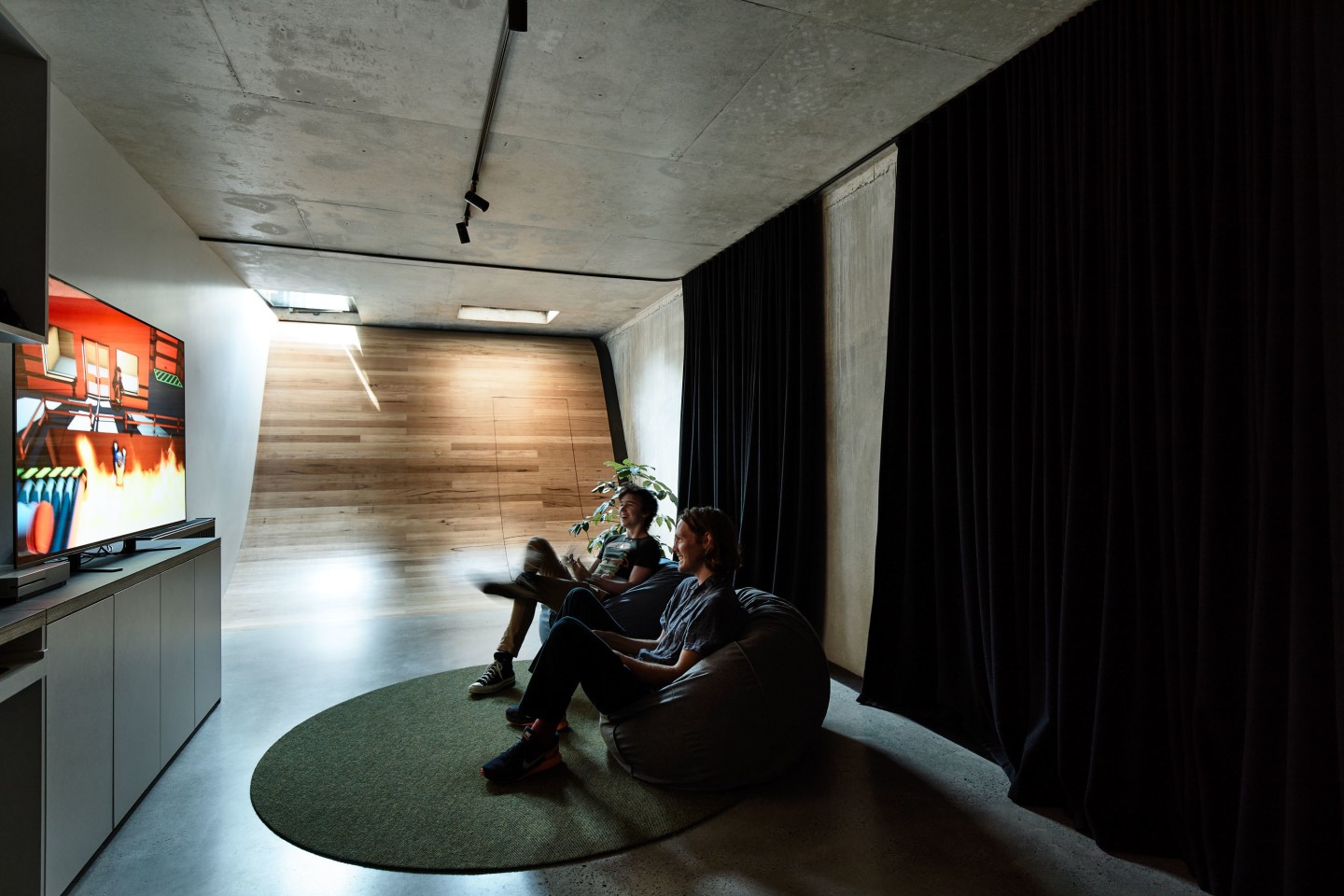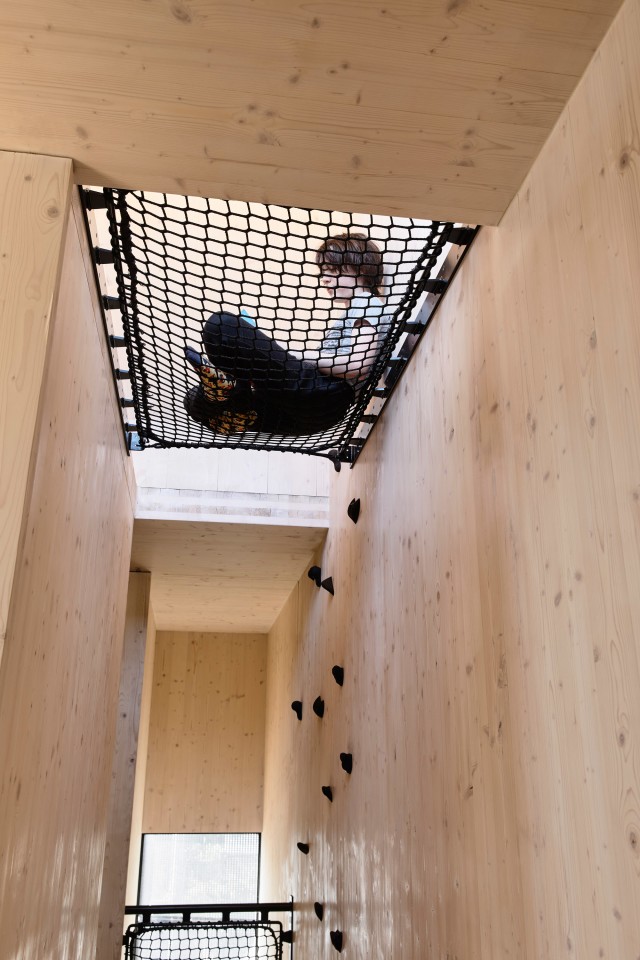A slide, nets, a climbing wall, and a hidden entrance: it sounds like the description of a kid’s playground, but it’s actually the latest residential project by Austin Maynard Architects. The Australian firm was hired to demolish an aging family house and replace it with their “forever home,” and did so with its usual flair for the unexpected.
Union House is situated on a compact inner-city plot in Melbourne and incorporates some of the old house that was demolished. The brick front-facing facade and adjoining side wall were retained. A large new CLT (cross-laminated timber) addition now forms the main structure of the home.
The interior measures 285 sq m (roughly 3,000 sq ft) and consists of two main levels, plus a basement and roof deck with partially green roof, and contains four bedrooms and three bathrooms. The first floor is arranged around an open plan living, dining, and kitchen area that opens onto the garden with large glass doors.
The basement level media room can be accessed either using the main staircase or a secret entrance that’s revealed by lifting a glass panel in the kitchen and descending down a steep wooden slide.

Derek Swalwell
The fun extra touches continue upstairs. Bookcases can be moved, hidden doors found, and a climbing wall and a net form part of an alternative method of navigating the home – it sounds like a fantastic place to grow up.
“In the center of Union is a black steel winding staircase, with part perforated treads,” explains Austin Maynard Architects. “It is a beautiful way to move between levels, however the clients wanted a back up plan. A way to get from the basement all the way to the roof without needing to take the standard route. A ramp, a glazed trap door, a series of climbing holds and nets enable this energetic family to clamber up walls without ever interacting with the stairs. A thoroughly unconventional way to move through a home, and a wonderful way to distract active boys. Though filled with ideas, Union is a coherent and practical family home that encompasses and responds directly to this unique client.”

Derek Swalwell
Austin Maynard Architects added some sustainability features along the way too. As well as the use of CLT sourced from sustainably-managed forests, rainwater is captured and stored in an underground tank. A green roof area improves insulation, and bricks were recycled for the paving.
Source: Austin Maynard Architects
Source of Article